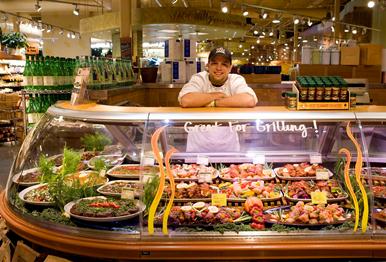Front of House: Educating Trendsetters
31 August 2011
 Many foodservice students today have yet to experience fine dining. But it’s just as important to expose them to the several other service styles in the marketplace so they may excel in their careers.
Many foodservice students today have yet to experience fine dining. But it’s just as important to expose them to the several other service styles in the marketplace so they may excel in their careers.
By Wendy Gay, CHE
When I attended The Culinary Institute of America in the early ʼ80s, the restaurant business was divided into four types of dining: quick-service restaurants (QSRs), casual dining (brass & fern bistros), institutional dining and formal dining or “white tablecloth restaurants.” We were required to work in each of these environments. We had the diner for training in QSR and casual dining, instruction on institutional dining and three other restaurants to expose us to formal dining. By rotating through these four environments, we gained experience in each area.
Times have changed. Culinary students today enter a very different world of dining, and the education we provide them has to deal with a variety of current phenomena.
Rather than four categories, the restaurant business is now divided into 10 segments. Each has a unique style and niche. They include the following (percentages refer to total market share):
- Value (27.6%). Emphasis is on low cost (like McDonalds, Taco Bell, CiCi’s Pizza or KFC)
- Family Friendly (21.7%). Designed to appeal to all members of a family (like Red Lobster, TGI Friday’s or Joe’s Crab Shack)
- Ultra Convenience (12.1%). Emphasis is on being quick and trouble-free (like Subway, Checker’s or 7-Eleven)
- Virtual Dining (9.0%). Where you take the food somewhere else (like Eatzi’s, Papa John’s, Whole Foods or Central Market)
- Everyday Chic (7.6%). Fast food in a more hip environment (like Au Bon Pain, Chipotle, La Madeleine or Spago)
- Health Centers (6.9%). Catering to special dietary needs (like Diet Gourmet or A Moveable Feast)
- Hang-Outs (5.2%). For relaxing, doing business or socializing (like Starbucks, Barnes & Noble or Friends Coffee Bar)
- Event Dining (4.2%). Where the main attraction is something other than the food (like Benihana, Planet Hollywood, Chuck E Cheese or at the aquarium)
- Experience Dining (4.1%). Present themselves as special places with special food (like Brennan’s, The Palm, Capital Grille or Café Annie)
- Fresh-Baked (2.7%). Feature freshly baked breads and pastries (like Panera or City Bagels)
As these categories represent, dining habits in most American families have changed. People are so busy trying to make a living and watching their “pennies” that dining choices are made based on what is fast and low cost. Most of my students today have never been to a “white tablecloth” restaurant. They do not know what it is like to have meals served in courses. Discussions of French or Russian service are from another world. They are used to eating on the run and having everything super convenient. At home, they don’t even sit at the dining room or kitchen table together to eat as a family.
It is our duty as teachers to expose them to different styles of service—especially now. These are the culinary stars of the future. Let’s make sure they are grounded in the front-of-the-house fundamentals, so they can be trendsetters.
I remain at your service,
Wendy
Wendy Gay, CHE, is an instructor in the culinary department at The Art Institute of Atlanta.
Photo: Austin, Texas-based Whole Foods is an example of the “virtual dining” segment, where the customer takes the food home or elsewhere. The grocery chain also operates in-store cafés.
